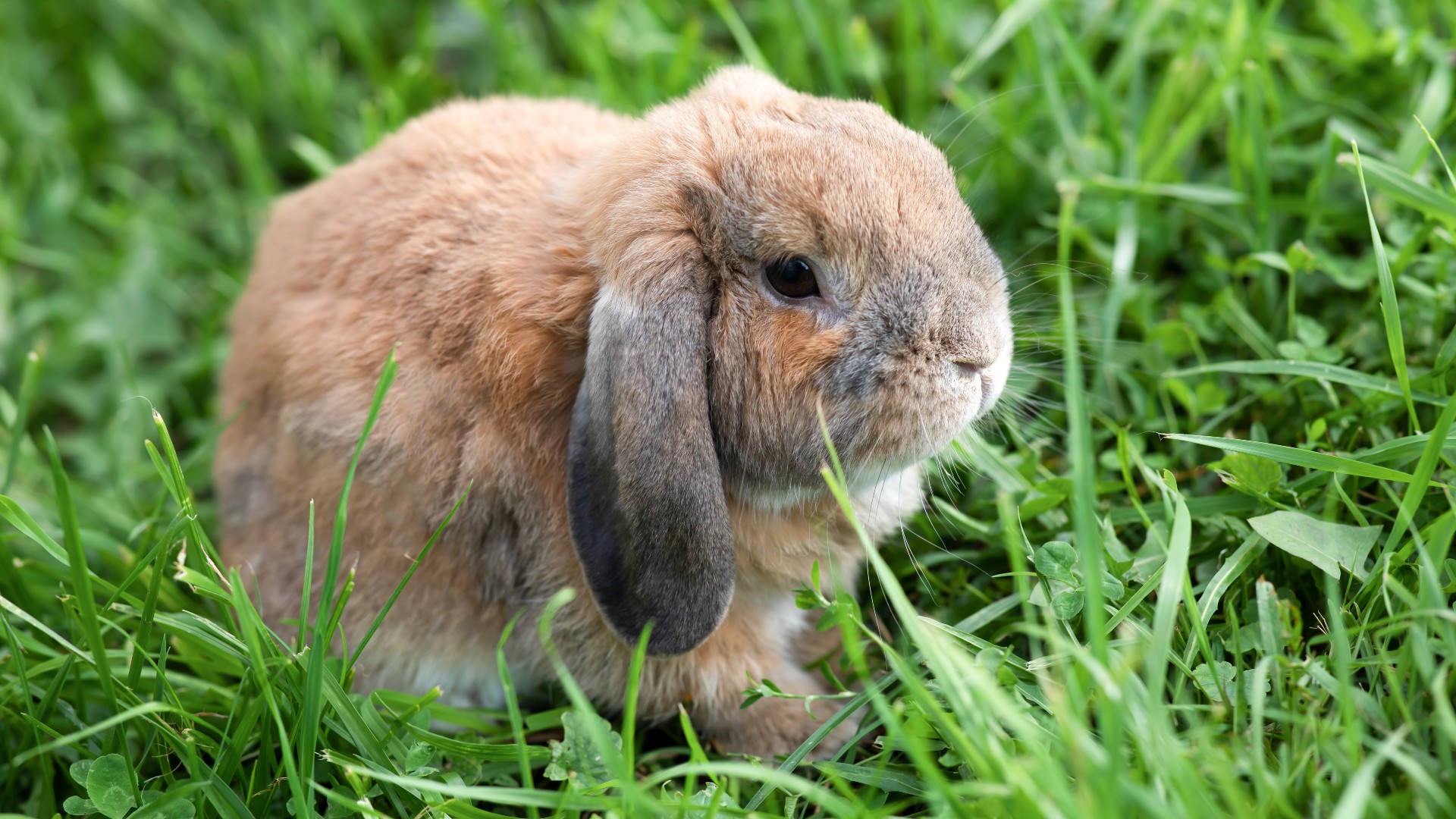Basic Appearance:
Mini lops look like animated stuffed animals. They have fat baby faces, floppy ears, luxurious fur, and stout, sturdy bodies. Mini lops are medium-sized rabbits, weighing around six pounds. They come in a large variety of colors, from simple black to the beautiful broken tortoise.
History, Temperament, and Common Uses:
In the U.S., mini lops are a medium-sized breed. The American mini lop should not be confused with the miniature lop in countries that use the British Rabbit Council standards. This breed is closer to the ARBA Holland lop than to the mini lop.
Lop rabbit breeds have their origin in Europe, with English lops being the first breed with floppy ears. They were followed by others such as the German big lop. When German breeders wanted a smaller lop rabbit they bred the German big lop to small chinchilla rabbits. The new breed was known as the klein widder, which means “little hanging-ear.” Mini lops where first imported to the U.S. by a man from California, Bob Herschbach, in the early 1970’s. He brought a trio of klien widders home from Germany and started work on developing a dwarf lop breed. Bob Herschbach originally called his breed the kline widder, but later changed it to mini lop. A man by the name of Herby Dyke was the breeder who was able to get the mini lop recognized by the American Rabbit Breeders Association in 1980.
Mini lops look like teddy bears, and they usually have a calm, friendly personality to match their cute look. They are good 4H rabbits, and equally popular as show rabbits and pets.
Grooming, Care, and Additional Notes:
Mini lops require little grooming. A quick brushing once a week will be enough to keep you lop looking his best. As with all rabbit breeds, they will need more frequent grooming during a molt.
Mini lops must be properly posed to evaluate them correctly. They should be posed with the toes of the front feet should be even with the eyes and the toes of the hind feet should be even with the haunches.
Mini Lop At A Glance…
Recognized Varieties:
Mini lops are shown in classifications: solid and broken.
Solid Pattern Varieties:
-Agouti Group: chinchilla (black, blue, chocolate, lilac, sable, smoke pearl), chestnut agouti (black or chocolate), lynx, opal
-Pointed White Group: black, blue, chocolate, or lilac points
-Self Group: black, blue, chocolate, lilac, white (pink or blue eyes)
-Shaded Group: frosted pearl (black, blue, chocolate, lilac), sable, sable point, seal, smoke pearl, tortoise (black, blue, chocolate, lilac)
-Ticked Group: silver/silver fox (black, blue, brown, fawn), steel (gold or silver tipped, black, blue, chocolate, lilac, sable, smoke pearl basic color)
-Wide Band Group: cream, fawn, orange, red
Broken Pattern Varieties: broken and tri-colored
ARBA Body Type:
Compact
Approximate Size:
4 1/2 to 6 1/2 pounds
Important Things to Look for When Buying Show Stock:
A generally thick, massive body, broad through the shoulders and hindquarters. There should be good depth throughout the body as well. Look for well-filled shoulders that rise to round, smooth hindquarters with good fullness at the lower hips. The widest point of the body should be at the hindquarters, narrowing just slightly to the shoulders. Mini lops should be well-muscled and compact, with good balance of body. Does may have a dewlap that balances with the rest of the rabbit.
The head should be set close to the body, with a bold, well developed and sturdy look. There should be a slight outward curve from the base of the ears to the nose. Look for a head that is in balance with the body. The ears should lop vertically down along the sides of the head, rising from a good basal ridge of cartiladge. The ear openings should be turned in toward the head, hanging close to the cheeks. Look for well furred, rounded ears with good balance of length and width. The overall outline of the head and ears should resemble a horseshoe.
Mini lops should have thick, short legs with heavy bone. Their legs should be straight. Broken pattern rabbits must have all toenails on front feet match, and all toenails on rear feet match, however a difference between front and back pigmentation is allowed.
Look for glossy rollback fur that has good luster. It should be uniform, and of medium length, with good density.
Things to Avoid:
Mini lops should not have a body that is long, narrow, or flat. They should not be undercut or chopped at the hindquarters. A large dewlap is a fault.
A rabbit with a long or narrow head, or a pointed nose. Poor ear carriage, narrow, thick, thin, or folded ears. Avoid ears that do not open toward the cheeks, and ears with thin fur.
Mini lops should not have fine bone. Check color standard for toenail color disqualifications.
Avoid a coat that is long, silky, harsh, thin, or very short. Many scattered white hairs in a solid patterned rabbit is a fault, as are incomplete face markings on a broken patterned rabbit. Brokens with so much color on the face that the pattern is not clear is a slight fault. Eye color that does not match, foreign color spots, no head markings on a broken, and a broken with less than 10% color, are disqualifications.
Link to National Specialty Club
Mini lops have two national specialty clubs devoted to them. The American Mini Lop Rabbit Club is chartered with the ARBA. There is also the Mini Lop Rabbit Club of America. Both clubs have great resourses for mini lop fans.


